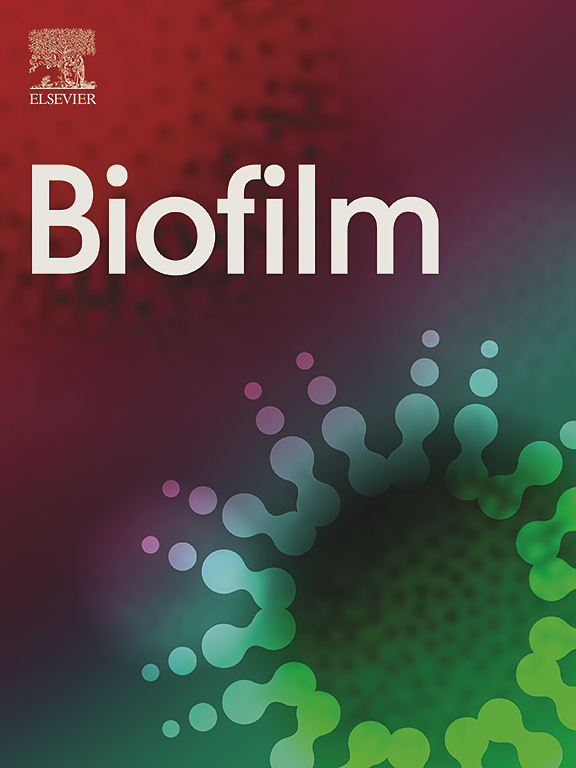Surfactin accelerates Bacillus subtilis pellicle biofilm development
IF 4.9
Q1 MICROBIOLOGY
引用次数: 0
Abstract
Surfactin is a biosurfactant produced by many B. subtilis strains with a wide variety of functions from lowering surface tension to allowing motility of bacterial swarms, acting as a signaling molecule, and even exhibiting antimicrobial activities. However, the impact of surfactin during biofilm formation has been debated with variable findings between studies depending on the experimental conditions.
B. subtilis is known to form biofilms at the solid-air, the solid-medium, and the liquid-air interfaces, the latter of which is known as a pellicle biofilm. Pellicle formation is a complex process requiring coordinated movement to the liquid-air interface and subsequent cooperative production of biofilm matrix components to allow robust pellicle biofilm formation. This makes pellicle formation a promising model system for assaying factors in biofilm formation and regulation.
Here, we assayed the influence of surfactin and additional metabolites on the timing of pellicle biofilm formation. Using time-lapse imaging, we assayed pellicle formation timing in 12 B. subtilis isolates and found that one, MB9_B4, was significantly delayed in pellicle formation by approximately 10 h. MB9_B4 was previously noted to lack robust surfactin production. Indeed, deletion of surfactin synthesis in the other isolates delayed pellicle formation. Further, pellicle delay was rescued by addition of exogeneous surfactin. Testing reporters of biofilm-related gene expression revealed that induction of pellicle formation was caused by a combination of increased gene expression of one of the biofilm components and promotion of growth.
表面素促进枯草芽孢杆菌膜生物膜发育。
表面素是许多枯草芽孢杆菌菌株产生的一种生物表面活性剂,具有多种功能,从降低表面张力到允许细菌群运动,作为信号分子,甚至具有抗菌活性。然而,表面素在生物膜形成过程中的影响一直存在争议,根据实验条件的不同,研究结果也不同。已知枯草芽孢杆菌在固体-空气、固体-介质和液体-空气界面形成生物膜,后者被称为膜生物膜。膜膜的形成是一个复杂的过程,需要协调运动到液-气界面,随后协同生产生物膜基质成分,以允许强大的膜膜生物膜的形成。这使得膜形成成为分析生物膜形成和调控因素的一个很有前途的模型系统。在这里,我们分析了表面素和其他代谢物对膜生物膜形成时间的影响。利用延时成像技术,研究人员分析了12株枯草芽孢杆菌的膜形成时间,发现其中一株MB9_B4的膜形成时间明显延迟了约10小时。此前研究发现MB9_B4缺乏强大的表面素生成能力。事实上,在其他分离株中,表面素合成的缺失延迟了膜的形成。此外,外源表面素的加入挽救了膜延迟。对生物膜相关基因表达的测试报告显示,诱导膜形成是由一种生物膜成分的基因表达增加和促进生长的结合引起的。
本文章由计算机程序翻译,如有差异,请以英文原文为准。
求助全文
约1分钟内获得全文
求助全文

 求助内容:
求助内容: 应助结果提醒方式:
应助结果提醒方式:


